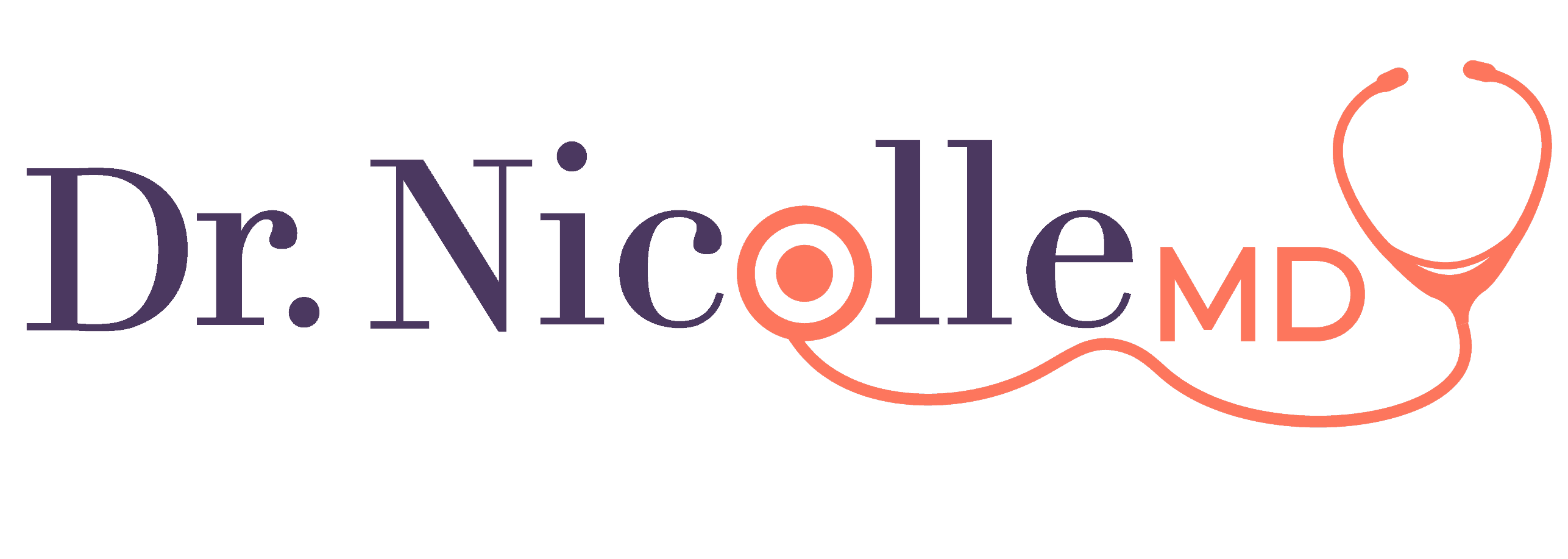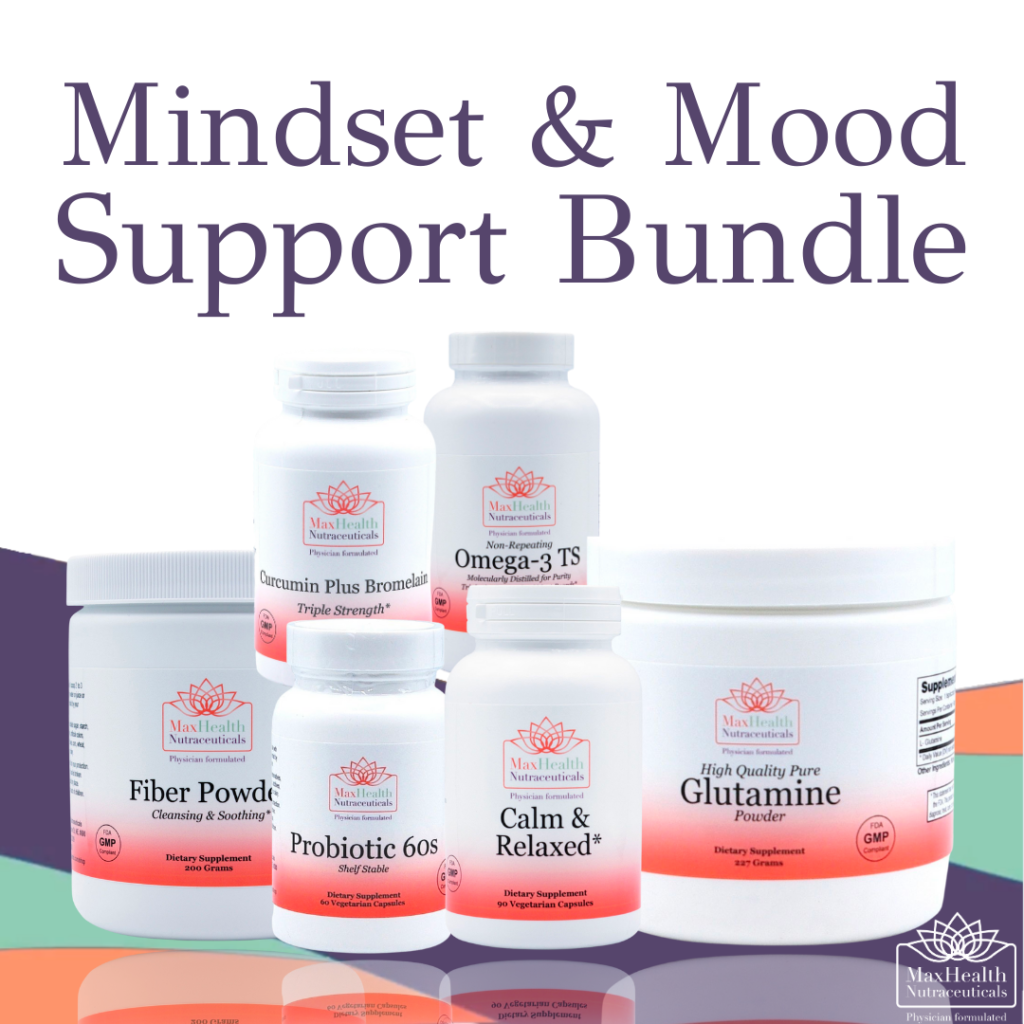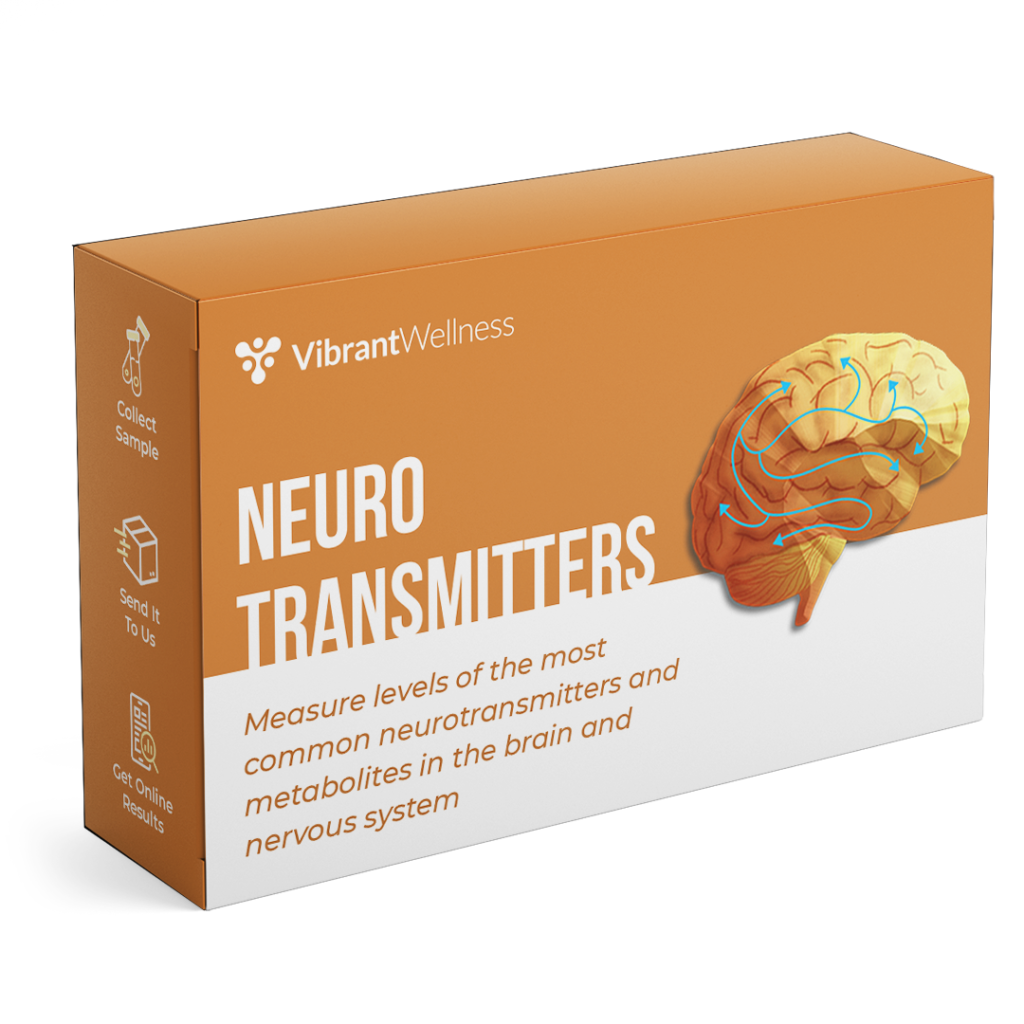
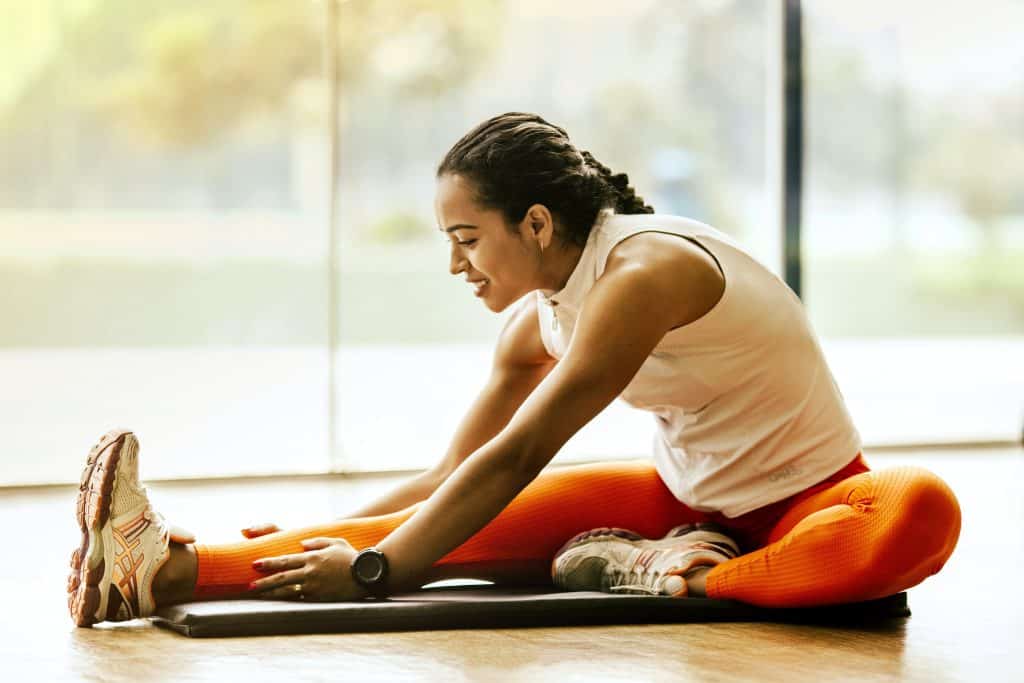
In a picturesque little town nestled between magnificent mountains and a tranquil river, lived an elderly man called Fergus. Fergus harbored a secret, one that kept him full of vitality, energy, and happiness. Every morning, as the first rays of the sun kissed the horizon, Fergus would venture to the riverbank to perform his rituals. His practices were shrouded in secrecy, and as a result, the townsfolk grew increasingly curious about what he did.
One bright morning, as the town began to stir, a young woman named Ava decided to discover Fergus’s secret. Ava was an inquisitive individual, always eager to learn, and the enigma surrounding the old man was too intriguing to ignore.
As she stealthily followed Fergus, she concealed herself behind a tree and observed him closely. She watched as he stretched his arms out wide and breathed in the crisp morning air. Fergus moved gracefully from one pose to another, inhaling and exhaling slowly and deeply. His movements were synchronized with his breath, and an air of peace enveloped him.
Ava could no longer resist her curiosity; she emerged from her hiding place and approached Fergus.
“Excuse me, sir. I couldn’t help but notice your morning routine,” she said tentatively. “I’m curious to know what you’re doing.”
Fergus paused, turned to her with a gentle smile, and replied, “Ah, my dear, I was hoping someone would ask me one day. What you see here is a blend of stretching and meditation. They are closely linked, and I believe they hold the secret to my well-being.”
“Intriguing,” Ava responded, her curiosity piqued. “How do they work together?”
“Well,” Fergus began, “When you stretch, you’re not only enhancing your physical flexibility but also releasing tension from your muscles. This helps to calm the mind and prepare it for meditation. Similarly, meditation helps you become more aware of your body, making your stretching exercises more mindful and effective.”
Ava listened intently, captivated by the wisdom Fergus shared. “Would you be willing to teach me your ways?” she asked.
“With great pleasure,” Fergus answered, beaming.
And so, under Fergus’s wise guidance, Ava began to learn the secret connection between stretching and meditation. As the days passed, she experienced the harmony and balance that these practices brought into her life.
Word of their daily ritual spread throughout the town, and before long, more and more townspeople joined them at the riverbank every morning. The town thrived with newfound energy, and its inhabitants experienced a tranquility they had never known before.
Fergus’s secret was no longer a mystery, and the town rejoiced in the power of stretching and meditation. This once-hidden connection transformed the lives of the townspeople, and it can do the same for you.
Continue reading below…
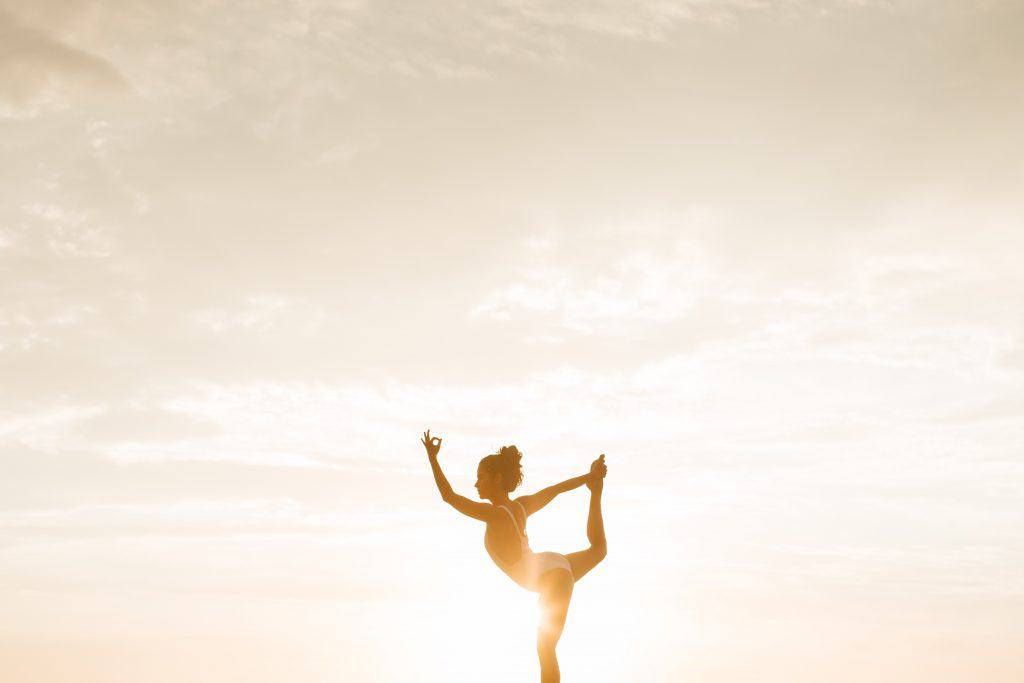
Introduction
The secret connection between stretching and meditation is often overlooked, yet it holds the key to unlocking numerous physical, mental, and emotional benefits. In our fast-paced world, discovering strategies to sustain our physical and mental health is becoming increasingly important for professionals.
In this blog post, we will explore the benefits of incorporating stretching into your meditation practice for optimal results. We’ll delve into functional and integrative medicine’s role in promoting these practices while providing tips on how to make the most of your sessions.
Finally, discover the power of mindful movement as we discuss combining yoga, tai chi, and qigong with meditation practices – further enhancing the secret connection between stretching and meditation for a truly transformative experience.
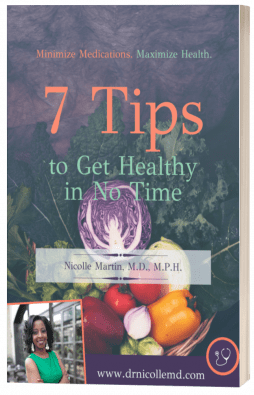
Minimize Medications. Maximize Health.
Are you super busy but need to take control of your health? Are you tired of being tired? Subscribe to my “Minimize Medications, Maximize Health Blog” and I’ll give you 7 Tips to Get Healthy in No Time absolutely FREE.
You have Successfully Subscribed!
Enhancing Flexibility for Meditation
Stretching exercises are an excellent way to improve flexibility, which allows individuals to sit more comfortably during extended periods of meditation. By working on your flexibility through targeted stretching exercises like static stretching, you can make your sessions more productive and comfortable.
The Importance of Gentle Stretch Before Meditation
Before diving into the meditative state, it’s crucial to gently stretch your muscles and joints. This simple yet effective practice prepares both body and mind for a deeper connection with oneself. Not only does it increase blood flow, but also helps in releasing tension from tight areas that may cause discomfort during meditation.
- Focused breathing: While stretching, pay attention to each breath as it flows in and out of the body. This mindfulness will help ease any lingering stress or anxiety before starting the meditation session.
- Hip openers: Incorporate hip-opening stretches such as pigeon pose or butterfly pose into your routine; these movements aid in maintaining proper posture while seated during meditation.
- Hamstring stretches: Lengthening tight hamstrings is essential for preventing lower back pain when sitting cross-legged or in other meditative positions. Try incorporating forward folds or downward-facing dog into your pre-meditation warm-up.
Benefits of Improved Posture and Effective Breathing Techniques
Achieving good posture through regular stretching has numerous benefits beyond just physical comfort during meditation sessions. Proper alignment promotes better circulation throughout the body while simultaneously encouraging efficient oxygen intake – two factors that play a significant role in overall mental clarity and focus.
- Reduced muscle tension: By maintaining proper posture, you can prevent unnecessary strain on your muscles and joints. This helps to alleviate discomfort during meditation sessions, allowing for a more profound connection with the mind.
- Better lung capacity: When sitting upright, your lungs have ample room to expand fully as you breathe in deeply. This increased oxygen intake supports mental clarity and focus during meditation.
- Mind-body awareness: Improved posture allows for better body awareness throughout the day and not just during meditation sessions. Maintaining mindful posture can lead to positive changes in overall health and wellbeing.
Incorporating stretching exercises into your daily routine is an essential step towards enhancing flexibility and reaping the full benefits of meditation practice. So why wait? Start today by incorporating some gentle stretches before each session.
By incorporating stretching into your pre-meditation routine, you can significantly improve the quality of your meditation sessions. Additionally, by understanding how to release tension before meditating and mastering effective breathing techniques, you will be able to boost energy levels and reduce distractions for a more productive session.
Boosting Energy Levels and Reducing Distractions
Incorporating stretching into your daily routine helps boost energy levels while simultaneously reducing distractions that may hinder the effectiveness of meditation practice. Increased flexibility achieved through regular stretching enables you to shift attention inwards easily, sharpen concentration, and maintain focus during meditation.
Techniques for Releasing Tension before Meditating
Gently stretch those muscles before settling down for a meditative session. By doing so, you’ll release tension from various parts of your body – making it easier to relax and concentrate on your inner self. Some effective techniques include:
- Static stretching: Holding each stretch for about 30 seconds allows your muscles to lengthen gradually and safely.
- Dynamic stretches: These involve moving through a range of motion repeatedly to warm up the joints and increase blood flow.
- Pilates or yoga-inspired stretches: Incorporate these disciplines’ principles into targeted exercises designed specifically for releasing tension in key areas like the neck, shoulders, hips, or lower back.

Releasing Tension with Targeted Stretches
To truly unlock the secret connection between stretching and meditation, it’s essential to incorporate targeted stretches that focus on releasing tension in specific muscle groups. For example, practicing Cat-Cow Pose can alleviate stiffness in the spine and neck area, while a gentle Seated Forward Bend can stretch out tight hamstrings and lower back muscles. By addressing these problem areas before diving into meditation practice, you’ll find yourself more relaxed and better able to concentrate on introspection.
- Cat-Cow Pose: Begin on all fours with hands under shoulders and knees under hips; alternate between arching your back (cow) and rounding it (cat).
- Seated Forward Bend: Sit down with legs extended straight ahead; hinge at hips while reaching for toes or shins without straining.
Focusing Inwardly for Deeper Introspection
Fostering concentration is a must when practicing meditation – particularly if you desire to maximize the advantages of this old-time tradition. One way to achieve a deeper level of introspection is by incorporating mindfulness techniques into your stretching routine, such as paying close attention to each breath and movement during your stretches.
For instance, while performing the Cat-Cow Pose mentioned earlier, try synchronizing your breath with each movement – inhale deeply as you arch your back (cow), then exhale slowly while rounding it (cat). This simple yet powerful technique can help calm the mind and bring about a heightened sense of awareness that will carry over into your meditation practice.
How Full Splits Contribute towards Enhanced Mental Clarity
You might be wondering how achieving full splits can help with mental clarity during meditation. Well, let us explain. When practicing full splits (or working towards them), you’re not only increasing flexibility but also engaging multiple muscle groups simultaneously. This requires intense focus which translates well when transitioning into a meditative state, promoting enhanced mental clarity as a result.
If you’re interested in incorporating full splits into your pre-meditation routine, we will later talk about some yoga poses that can help you work towards this goal. Remind yourself to take heed of your physicality and progress slowly in a manner that is comfortable for you.
By stretching and releasing tension, we can boost our energy levels and reduce distractions to prepare for meditation. Integrative medicine has also proven that certain poses help awaken energy levels while quieting the mind; this is an important step in finding a deeper level of contemplation.
Functional and Integrative Medicine’s Support for Stretching
In the world of Functional and Integrative Medicine, stretching is highly encouraged as a means to support meditation effectively. This holistic approach recognizes the benefits derived from combining these two practices in achieving optimal health outcomes, especially for busy professionals looking to take control of their well-being.
Sitting Poses that Awaken Energy Levels While Quieting the Mind
Yoga has been known to be a beneficial activity for the preparation of body and spirit prior to meditation. By incorporating specific sitting poses into your pre-meditation routine, you can awaken energy levels while simultaneously quieting your mind:
- Sukhasana (Easy Pose): A simple cross-legged position that helps open up hips and lengthen spine. Sit on a cushion or mat with legs crossed at shins, hands resting on knees, spine straightened, shoulders relaxed, and chest open.
- Vajrasana (Thunderbolt Pose): Kneeling with buttocks resting on heels, this pose aids digestion while promoting mental focus.
- Ardha Padmasana (Half Lotus Pose): Begin in Sukhasana then place one foot on top of the opposite thigh while keeping the other foot under the opposite knee; maintain proper alignment throughout. An intermediate seated posture where one foot rests on opposite thigh; it encourages proper alignment & deeper concentration during meditation sessions.
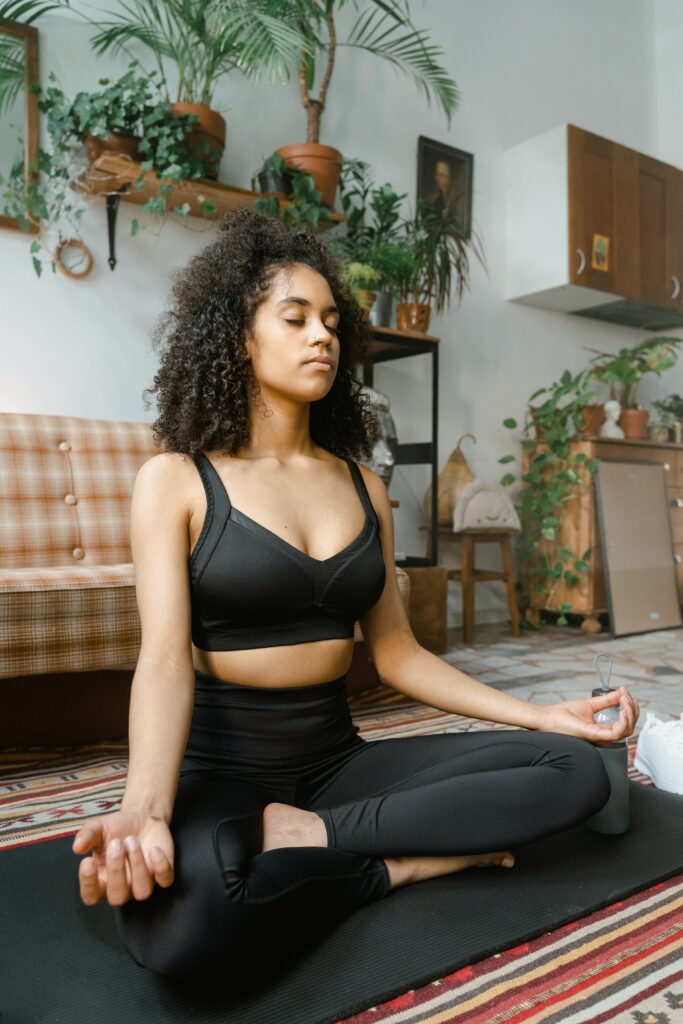
Releasing Neck Tension to Soothe Shoulders for Deep Contemplation
No matter how ergonomic our office chairs claim to be, many busy professionals still experience neck tension after a long day at work. Releasing this tension before meditating not only soothes shoulders but also promotes deep contemplation by eliminating physical discomforts:
- Gently stretch your neck by tilting head towards each shoulder and hold for 15-30 seconds on each side.
- Perform slow, controlled head rolls in both clockwise and counterclockwise directions to release tension from the neck muscles.
- Incorporate static stretching exercises targeting upper back & shoulders, such as clasping hands behind your back & gently lifting arms upwards to alleviate tightness that may hinder effective meditation practice.
By integrating these simple yet effective techniques into your daily routine, you can experience the powerful synergy between stretching and meditation. As a result, busy professionals like yourself will be better equipped to minimize reliance on medications while maximizing overall health using integrative therapies and lifestyle changes.
Functional and Integrative Medicine’s Support for Stretching is essential to achieving overall health, as it allows us to balance our energy levels while calming the mind. Moving on from this concept of balancing energy, we can now look into simple techniques that will help busy professionals maintain their equilibrium during seated meditations.
Achieving Balance with Simple Techniques
Balance is crucial for maintaining comfort and focus during meditation. It’s essential to incorporate simple techniques that enhance balance. In this section, we’ll discuss some easy-to-implement tips for achieving balance in seated meditations and addressing common challenges faced by busy professionals.
Tips for Maintaining Balance During Seated Meditations
- Wiggling Toes: Wiggling your toes may seem like an insignificant action, but it can have a significant impact on your overall balance during seated positions in meditative practices. You might be surprised to discover how much your toes can move once you give them a break from being squeezed into shoes all day. Curling and spreading your toes will cut down on foot pain and increase your balance. Wiggling your toes can be an effective way to engage the muscles in your feet and lower legs, while heightening one’s consciousness of their body connectedness with the earth.
- Ankle Circles: While seated, extend one leg and rotate your ankle clockwise for 10-15 seconds, then counter-clockwise. Repeat on the other side.
- Focusing on Your Breath: Paying attention to each inhale and exhale allows you to stay present throughout the meditation session. Focusing on your breath also helps maintain proper posture by encouraging deep breathing from the diaphragm rather than shallow chest breaths which could lead to slouching or discomfort.
- Cushion Support: Using a cushion or folded blanket under your sit bones can provide additional support and promote better alignment of the spine during seated poses. Experiment with different heights until you find one that feels comfortable yet supportive enough for extended periods of sitting.
Addressing Common Challenges Faced by Busy Professionals
Maintaining consistency in stretching routines might be challenging due to hectic schedules; however, there are ways around these obstacles. Here are some suggestions:
- Stretch Breaks: Incorporate short stretching breaks into your workday. This can be as simple as standing up and performing a few static stretches every hour or taking a 5-minute break to gently stretch your muscles.
- Morning Routine: Start your day with a brief stretching session followed by meditation to help you feel energized, focused, and ready for the day’s challenges.
- Lunchtime Meditation: Dedicate part of your lunch break to practicing mindfulness through meditation. Even just 10 minutes spent in quiet contemplation can have lasting benefits on both mental clarity and overall well-being.
Incorporating these simple techniques into your daily routine will help ensure that you maintain balance during seated meditations while addressing common challenges faced by busy professionals like yourself.
By incorporating simple techniques such as stretching and meditation into our daily routines, we can achieve balance in our lives. Combining stretching and meditation can have a profound effect when done routinely, leading to greater mental and physical health.
Power of Combining Stretching & Meditation
The perfect combination of stretching and meditation offers numerous physical and mental benefits that contribute towards total well-being. Busy professionals seeking control over their health journey can greatly benefit from incorporating this holistic approach regularly into their lives. Practicing both consistently will lead to improvements within both the physical body and mental state.
Positive Changes Observed in Overall Well-Being
- Better posture: By working on your flexibility through targeted exercises like static stretching, you’ll be able to maintain a comfortable seated position during meditation, promoting better posture overall.
- Increase in energy levels: Gently stretch before each session to help boost your energy levels, making it easier for you to focus during meditation.
- Mental clarity: Releasing tension through practices such as full splits allows for enhanced mental clarity, enabling you to concentrate more effectively on the present moment while meditating.
- Calmness and stress reduction: Regularly practicing stretching combined with meditation helps reduce stress levels by encouraging relaxation throughout the entire body, ultimately leading to an improved sense of calmness in daily life.
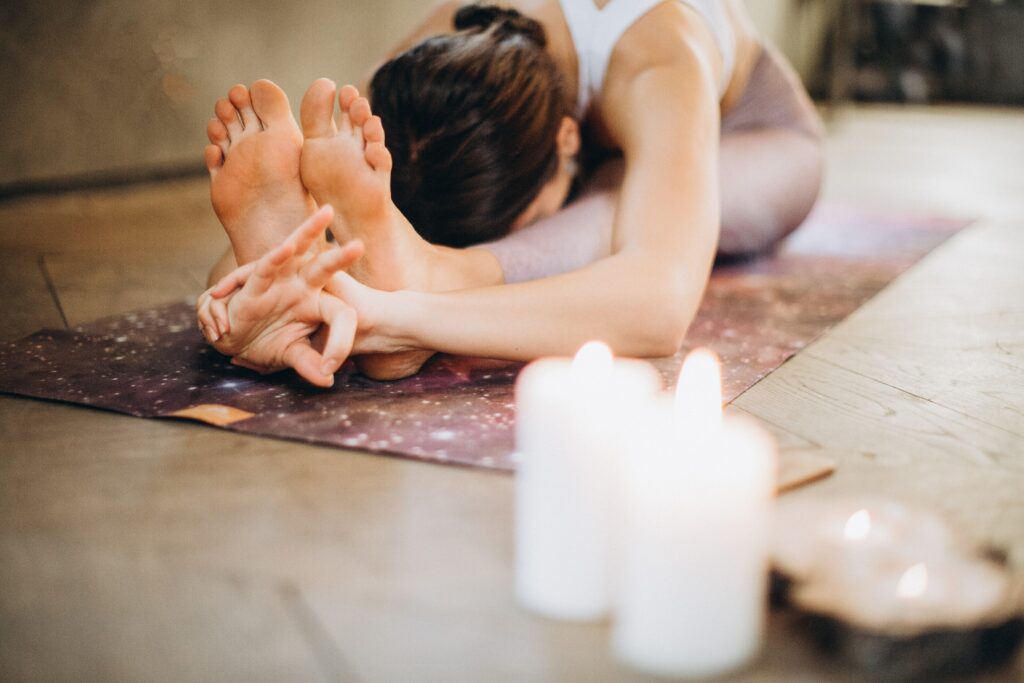
The Importance of Consistency and Commitment to the Practice
To truly reap the rewards offered by combining stretching with meditation, consistency is key. It’s essential for busy professionals to not only find time but also make a commitment towards integrating these two practices into their daily routine. Here are some tips on how best achieve this goal:
- Create a designated space in your home or office where you can practice both stretching and meditation without distractions.
- Set aside a specific time each day for these practices, even if it’s just 10-15 minutes, consistency is more important than the duration of each session.
- Find a stretching routine that works best for you, whether it’s through online resources like Yoga Journal, attending classes at a local studio, or working with an experienced instructor to create a personalized plan tailored to your needs.
- Investigate different meditation techniques, such as mindfulness, loving-kindness (metta), or body scan approaches to discover what speaks to you the most. There are numerous apps available like Headspace and Calm that offer guided meditations catering various preferences & skill levels.
Merging meditation and stretching into your daily life will benefit you greatly in terms of both physical & mental health, allowing for greater success on a personal and professional level. As busy professionals striving towards optimal health outcomes, making this commitment is essential not only for managing stress but also enhancing physical flexibility & mental clarity, ultimately leading towards greater success both personally & professionally.
Holistic Approaches for Chronic Disease Management
Understanding the relationship between stretching and meditation empowers those looking to take control of their own health, particularly if they are dealing with chronic diseases and wish to incorporate holistic approaches into their treatment plans. By focusing on flexibility through various stretches before meditating, one can experience increased comfort leading to more productive mindfulness practices that contribute to overall well-being.
Integrative Medicine’s Role in Encouraging Stretching
Integrative medicine is a rapidly growing field that combines conventional medical treatments with complementary therapies such as yoga, acupuncture, massage therapy, and herbal remedies. One key aspect of integrative medicine is its emphasis on lifestyle changes like regular exercise and stress reduction techniques, including stretching exercises, which have been shown to be effective in managing chronic conditions like diabetes, hypertension, or heart disease.
As busy professionals explore ways to minimize medication use while maximizing health benefits from integrative therapies like Dr. Nicolle MD’s program, incorporating stretching routines alongside meditation becomes an essential part of their daily regimen.
Long-term Benefits of Combining Stretching & Meditation
- Better pain management: Regularly practicing both stretching exercises and meditation has been found to help alleviate chronic pain by improving muscle strength, joint mobility, posture alignment while promoting relaxation mental focus during difficult moments when discomfort arises . This combined approach offers a natural alternative way manage symptoms without relying solely medications side effects associated them .
- Mental clarity & emotional balance: The combination these two practices helps individuals achieve greater mental clarity emotional balance through increased self-awareness heightened ability regulate emotions response stressors life events . This ultimately leads better decision-making improved relationships overall happiness well-being .
- Enhanced immune function: Studies have shown that regular meditation practice can boost the immune system by increasing production of antibodies and other infection-fighting cells. When combined with stretching exercises, which help improve circulation and lymphatic flow, this dynamic duo works together to support optimal health defense against illness disease.
Incorporating both stretching and meditation into your daily routine not only enhances the physical and mental well-being, but also provides a holistic approach to managing chronic diseases by improving quality life.
You can gain command over your health and minimize the necessity for pharmaceuticals by embracing a comprehensive approach to managing chronic illness. Utilizing coaching tools such as guided stretches and mindfulness practices can help build an environment that encourages self-improvement.
Utilizing Coaching Tools for Self-Improvement
As busy professionals, finding the time and motivation to consistently practice stretching and meditation can be challenging. However, with the help of coaching tools, you can easily incorporate these beneficial practices into your daily routine. Coaching tools not only give you direction, but also build a supportive network of individuals who have the same aspirations.
Enhancing Mindfulness Practices through Guided Stretches
Incorporating guided stretches into your pre-meditation routine is an excellent way to ensure that you are effectively preparing both your body and mind for introspection. There are numerous resources available online that offer step-by-step instructions on various stretching exercises specifically designed to support meditation sessions. For example, check out this comprehensive guide on yoga stretches to do before bed. By following these guides, you’ll find it easier to maintain proper posture during meditation while reducing muscle tension.
- Breathing exercises: Practice deep breathing techniques while performing gentle stretches as they aid in relaxation and focus.
- Tailored routines: Choose from a variety of guided stretch routines based on your specific needs or preferences (e.g., morning vs evening).
- Multimedia content: Utilize videos or audio recordings featuring expert instructors guiding you through each stretch sequence.
Building a Supportive Community of Like-Minded Individuals
A key aspect of maintaining consistency in any wellness journey is having access to a network of people who share similar interests and goals. This sense of camaraderie provides encouragement when motivation wanes and serves as a valuable resource for exchanging tips, experiences, and advice. There are several ways to connect with others who also value the connection between stretching and meditation:
- Online forums: Join discussion boards or social media groups dedicated to mindfulness practices, such as Reddit’s Meditation community.
- Local classes or workshops: Attend in-person events where you can meet fellow practitioners while receiving expert guidance on your practice.
- Mentorship programs: Seek out experienced individuals who can provide personalized support and encouragement throughout your journey.
Incorporating coaching tools into your daily routine will not only enhance your mindfulness practices but also foster personal growth by connecting you with like-minded individuals. By utilizing these resources, busy professionals can successfully integrate stretching exercises and meditation sessions into their lives for improved overall well-being.
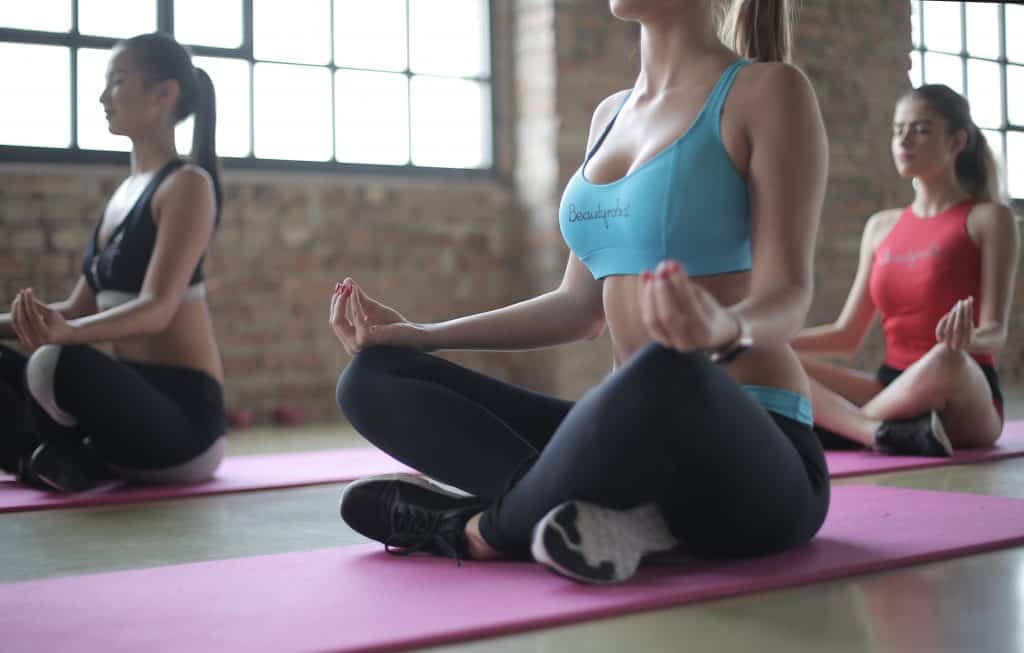
I would love to give you a free resource sheet to support your quest for a healthy mindset. Click the button below to receive your gift.
I really wanted to talk about this topic today because I wanted to share some lifestyle-based strategies to improve your overall mindset and mental health, which in turn improves your life. You must do the internal work to improve your overall health. You can do this by learning what motivates you and working each day on improving your mindset. Your thoughts control your feelings, which controls your behavior. You can cultivate certain behaviors and practices that will not only enrich your life, but that you can pass on to your family, friends, and community, so that you can leave a legacy of health to your loved ones.
If you are familiar with my approach, I use functional medicine and lifestyle medicine as the first line of treatment, before medications, to treat lifestyle-related chronic diseases. Lifestyle-related chronic diseases include diabetes, hypertension, obesity, some cancers, just to name a few. Lifestyle modifications, such as stress reduction and mindfulness exercises, can help you feel better about yourself and your life. In certain cases, these approaches may even outperform pharmaceutical therapy. But I always tell my patients that conventional medications may be appropriate at this time to prevent catastrophic illness, but over time, you can work to make the necessary lifestyle changes to possibly reduce and/or eliminate medications. Please remember to always consult your physician for your particular needs and circumstances prior to making any decisions whatsoever.
Is Dietary Supplementation Right For You?
Did you know that what you eat can have a significant impact on your mood and mindset? A poor diet can lead to decreased energy levels, low moods, and even depression. Conversely, a healthy diet can improve your mood, help you feel more energetic, and boost your overall sense of well-being.
For some people, vitamin and mineral supplements offer important health benefits. Supplements are designed to fight deficiencies found in our diet and complement the food we eat regularly. Supplements are basically “helping hands” to our daily food.
When stress, anxiety, and depression creep in, it can be difficult to stay motivated and keep your head in the game. Fortunately, dietary supplementation can help. Certain vitamins, minerals, herbs and other natural ingredients have been shown to improve moods and reduce stress levels. For example, B vitamins (such as B6 and B12) are essential for maintaining healthy brain function and producing energy. Omega-3 fatty acids, which can be found in fish oil supplements, are known to reduce stress hormones and promote relaxation. Magnesium is also important for mental health – it helps regulate stress hormones, reduce anxiety levels and improve quality of sleep.
In addition to these supplements, there are also a number of herbal remedies that can help with stress management. Herbs such as lavender, chamomile and passionflower can be helpful for calming the body and reducing stress levels. Valerian root is another popular stress-relieving herb – it helps to relax the mind and promote restful sleep.
Ultimately, dietary supplementation can play an important role in improving your mindset and mood. If you’re feeling stressed or down, consider adding some of these supplements to your daily routine! They may just be the key to unlocking your mental wellbeing.
So… if you are unable to eat better and need supplementation, the supplements in my Mindset and Mood Support Bundle may provide the extra boost you need.
These are my favorite Mood Support Supplements to use! This Mindset and Mood Support Bundle will ensure you have the intake of the important vitamins, minerals, and probiotics to decrease inflammation and boost your innate wellness day and night. Taken together, it’s a solid plan for increasing your body’s natural resiliency while you improve your sleep, decrease your stress, and improve your mental clarity, naturally.
Tools For Motivation And Mindset
Meditating
Although you don’t need a cushion to meditate, you may want to consider using one at some point. You could meditate in a chair, or simply sit on the floor if you want. You can also use pillows or cushions from your furnishings to try out. Cushion, chair, bench, floor – it’s all good. Eventually, though, if you’re not sitting upright on a chair, you’ll probably do well to buy a dedicated meditation cushion. The cushion will support your sitting posture and help you create an appealing mindfulness corner that will encourage you to practice every day. I recommend this meditation cushion and mat bundle.
Journaling
If you struggle with stress, depression, or anxiety, keeping a journal can be a great idea. Even if you don’t have these conditions, journaling can enhance your life in many ways. Having difficulty processing your thoughts and emotions? Journaling can help clear that mental clutter and move towards a positive mindset. Research suggests that keeping a journal can have positive impacts on both mental and physical health. So, to start you on your journey, I recommend this self care journal.
Yoga
Yoga can be a great way to improve your strength and flexibility, manage your stress, improve your heart health, and lose weight! I recommend using a grounded yoga mat to connect yourself with the earth and reduce inflammation.
Food!
Remember, living a healthy lifestyle including eating a whole foods plant-based diet, regular physical activity, meditation and mindfulness, as well as healthy and supportive relationships are the best ways to support mental health.
Please talk with your doctor about any complementary health approaches, including supplements, you use. Let me know what you think in the comment section below.
Still Feeling A Little “Off”?
You may want to consider looking at your neurotransmitter levels. We’ve all heard of neurotransmitters—those chemical messengers that facilitate the transmission of signals from one neuron to the next across a synapse. But, what do they actually do?
Neurotransmitters influence and regulate a wide range of processes, from mental performance and emotions to pain response and energy levels. It’s no wonder why many people seek professional help when their neurotransmitter levels become imbalanced. Let’s take a closer look at how neurotransmitters work and what options are available for addressing imbalances.
What Is a Neurotransmitters Test?
The best way to determine if there’s an imbalance is through testing. The Vibrant Wellness Neurotransmitter Test is designed to measure levels of various hormones and chemicals in the brain and peripheral nervous system that play an important role in mood, memory, aging, balance, nervous function, movement, pain perception, eating behavior, sleep/wake cycles, stress biology, heart rate variability (HRV), etc. The Neurotransmitters panel measures levels of important hormones and chemicals in the brain and peripheral nervous system—including serotonin (mood), dopamine (motivation), epinephrine/norepinephrine (energy), GABA (relaxation) , glutamate (balance), acetylcholine (memory) , histamine (inflammation).
It’s also important to note that this test looks at both active levels as well as metabolites which helps identify underlying causes for imbalances such as poor absorption or metabolism. With this data in hand, you can start making changes that help restore balance.
Imbalances in these chemicals can lead to a variety of symptoms including irritability, anxiety or depression; cognitive issues such as forgetfulness; sleep disturbances; fatigue; digestive problems; low libido; weight gain or loss; etc. A Neurotransmitter test is used to detect underlying imbalances that may be causing these symptoms.
What Are the Benefits of a Neurotransmitter Test?
A neurotransmitter test can provide valuable insight into your overall health. It can identify any underlying hormonal or chemical imbalances that may be contributing to your symptoms. Once these imbalances have been identified, you can work with your healthcare provider to develop an individualized treatment plan that addresses the root cause of your symptoms. This could include lifestyle changes such as diet modifications or exercise regimens as well as supplements or medications designed to correct any deficiencies in neurotransmitter production.
What Can I Do if My Test Comes Back Positive?
If your test comes back positive for an imbalance in one or more neurotransmitters, there are several things you can do to get back on track. The first step is to identify any underlying lifestyle factors that could be contributing to the imbalance (such as sleep deprivation or poor nutrition). Once you’ve identified those factors, you can begin making changes – such as improving your diet or getting more exercise – to help restore balance. Additionally, certain supplements may also be recommended by your doctor or health care provider in order to promote optimal neurological functioning and support healthy neurotransmitter levels.
In A Nutshell…
Neurotransmitters are essential for a healthy mind and body – they influence mental performance and emotions while helping regulate key processes like pain response and energy levels. If you’re feeling off balance lately or experiencing unusual symptoms like insomnia or digestive issues it might be worth looking into whether there’s an underlying imbalance in your neurotransmitter levels causing your discomfort. A Neurotransmitters panel test will give you valuable insight into what’s going on within your body so you can take corrective action if needed! With the information gained from this test you’ll be able to better understand what’s going on within your body and make informed decisions about how best to bring yourself back into balance!
PLEASE NOTE: If you or someone you know is experiencing severe stress, anxiety, depression and/or other mental health issues, please contact SAMHSA’s National Helpline, 1-800-662-HELP (4357), (also known as the Treatment Referral Routing Service) or TTY: 1-800-487-4889. This is a confidential, free, 24-hour-a-day, 365-day-a-year, information service, in English and Spanish, for individuals and family members facing mental and/or substance use disorders. This service provides referrals to local treatment facilities, support groups, and community-based organizations. Callers can also order free publications and other information.
The Secret Connection Between Stretching and Meditation FAQs
Yes, stretching can help with meditation. Stretching helps to relax the body and mind while allowing for deeper focus on breathing and inner awareness. When done correctly, it increases circulation which improves concentration and encourages relaxation of both physical and mental tension. Stretching can be advantageous in aiding flexibility of the muscles around joints, thus lessening discomfort connected with long-term conditions such as arthritis or fibromyalgia. All these benefits combined make stretching an important part of a successful meditation practice.
Stretching and meditation are key for the hectic lives of professionals, as they can help reduce tension, enhance suppleness, boost attention span and concentration levels, energize one’s body, improve posture and equilibrium, bolster immunity systems, aid in better rest quality plus more. Both practices have been shown to be beneficial for physical and mental health alike, promoting flexibility in the body and clarity of mind. Stretching helps keep muscles supple while meditation can help clear the mind of negative thoughts that may lead to unhealthy behaviors or emotions. Together these activities create a powerful combination for taking control of one’s health and minimizing reliance on medications.
Stretching can be beneficial for spiritual growth, as it facilitates relaxation of both body and mind. It increases blood flow to muscles, improves posture, and releases tension from physical stressors. Stretching can provide a tranquilizing effect, aiding in the focus of breath and internal reflection. Stretching can also aid us in gaining greater bodily consciousness, thereby deepening our spiritual connection with ourselves. When we take time for ourselves through stretching or yoga postures, we are able to find peace within ourselves that is essential for any spiritual journey.
Yes, there is science behind stretching. Studies have indicated that frequent stretching can result in improved suppleness, a bigger range of movement, fewer chances of being hurt, better posture, greater blood flow and more vigor. Stretching also helps to relax tense muscles which can lead to improved mental clarity and better overall wellbeing. Moreover, stretching has been associated with greater muscular power and dexterity, as well as a decrease in chronic manifestations like back pain or joint inflammation.
Final Thoughts
Stretching and meditation are a powerful combination that can help busy professionals maximize their health, while minimizing the use of medications. With an understanding of the secret connection between stretching and meditation, you can make your sessions more productive by working on flexibility. By combining yoga, tai chi, qigong with mindfulness practices – you’ll be able to experience all-round well-being in no time.
Take control of your health today by exploring the connection between stretching and meditation. Discover how these integrative therapies can help you reduce medication use and maximize wellness for a better life.
References
- Ahmadi, A., Nikbakh, M., Arastoo, A., & Habibi, A. H. (2010). The effects of a yoga intervention on balance, speed and endurance of walking, fatigue and quality of life in people with multiple sclerosis. J Hum Kinet, 23(1), 71. http://psjd.icm.edu.pl/psjd/element/bwmeta1.element.-psjd-doi-10_2478_v10078-010-0009-2
- Zeidan, F., Johnson, S. K., Diamond, B. J., David, Z., & Goolkasian, P. (2010). Mindfulness meditation improves cognition: Evidence of brief mental training. Consciousness and cognition, 19(2), 597-605. https://www.sciencedirect.com/science/article/abs/pii/S1053810010000681
- Hölzel, B. K., Carmody, J., Vangel, M., Congleton, C., Yerramsetti, S. M., Gard, T., & Lazar, S. W. (2011). Mindfulness practice leads to increases in regional brain gray matter density. Psychiatry research: neuroimaging, 191(1), 36-43. https://doi.org/10.1016/j.pscychresns.2010.08.006
- Rusch, H. L., Rosario, M., Levison, L. M., Olivera, A., Livingston, W. S., Wu, T., & Gill, J. M. (2019). The effect of mindfulness meditation on sleep quality: a systematic review and meta‐analysis of randomized controlled trials. Annals of the New York Academy of Sciences, 1445(1), 5-16. https://doi.org/10.1111/nyas.13996
- Gothe, N. P., Keswani, R. K., & McAuley, E. (2016). Yoga practice improves executive function by attenuating stress levels. Biological psychology, 121, 109-116. https://doi.org/10.1016/j.biopsycho.2016.10.010
- Ramamoorthi, R., Gahreman, D., Skinner, T., & Moss, S. (2019). The effect of yoga practice on glycemic control and other health parameters in the prediabetic state: A systematic review and meta-analysis. PLoS One, 14(10), e0221067. https://doi.org/10.1371/journal.pone.0221067
- Farb, N. A., Segal, Z. V., & Anderson, A. K. (2013). Mindfulness meditation training alters cortical representations of interoceptive attention. Social cognitive and affective neuroscience, 8(1), 15-26. https://doi.org/10.1093/scan/nss066
- Pascoe, M. C., Thompson, D. R., & Ski, C. F. (2017). Yoga, mindfulness-based stress reduction and stress-related physiological measures: A meta-analysis. Psychoneuroendocrinology, 86, 152-168. https://doi.org/10.1016/j.psyneuen.2017.08.008
- Hosakote, V. S., Rao, M. R., Nagendra, R. H., Raghuram, N., Mohan, R., Nanjundiah, V., … & Rao, N. (2009). Effects of yoga on symptom management in breast cancer patients: a randomized controlled trial. International journal of yoga, 2(2), 73. https://www.ijoy.org.in/article.asp?issn=0973-6131;year=2009;volume=2;issue=2;spage=73;epage=79;aulast=Hosakote
- Reibel, D. K., Greeson, J. M., Brainard, G. C., & Rosenzweig, S. (2001). Mindfulness-based stress reduction and health-related quality of life in a heterogeneous patient population. General hospital psychiatry, 23(4), 183-192. https://doi.org/10.1016/S0163-8343(01)00149-9
Dr. Nicolle Martin
Some of the links in this article are "affiliate links", a link with a special tracking code. This means if you click on an affiliate link and purchase the item, we will receive an affiliate commission.
The price of the item is the same whether it is an affiliate link or not. Regardless, we only recommend products or services we believe will add value to our readers.
By using the affiliate links, you are helping support our Website, and we genuinely appreciate your support.
Last updated on May 9th, 2023 at 03:51 pm

Minimize Medications. Maximize Health.
Are you super busy but need to take control of your health? Are you tired of being tired? Subscribe to my “Minimize Medications, Maximize Health Blog” and I’ll give you 7 Tips to Get Healthy in No Time absolutely FREE.
